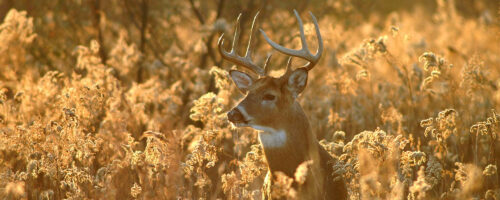Fish Pond Water Quality: As Simple as Chemistry 101
Water quality is one of the most overlooked aspects of pond management - until it affects fish production.
Water quality is one of the most overlooked aspects of pond management – until it affects fish production. Clay turbidity in ponds is one of the most common quality issues we address (see Let’s Clear the Waters by Will Moseley). However, several other variables influence water quality for fish including water temperature, phytoplankton, photosynthesis and pH, carbon dioxide, alkalinity and hardness. Additionally, water quality can be affected through the interaction of these factors.
Water temperature influences the onset of fish spawn, aquatic vegetation growth and the biological demand for oxygen in ponds. As water temperature increases, it holds less oxygen. Additionally, plants and animals use more oxygen due to increased respiration rates. These factors commonly result in less available oxygen for fish during the summer and fall months. Another temperature-related phenomenon is water stratification. This occurs in deeper ponds as increased ambient temperature causes a warm, less dense layer of water to stratify over a cool, dense layer of water. Most of the oxygen is produced in the warm surface layer of water and over time oxygen can be depleted in the cooler layer. These layers may not mix for a long period until a cold front or thunderstorm cools the surface layer allowing the two layers to mix. This is often referred to as “turn-over.” The result is a sudden dilution of oxygen and a simultaneously increased demand for oxygen from decaying organic matter. This can cause severe fish kills.
Phytoplankton are microscopic plants that produce most of the oxygen and are the base of primary productivity in a pond. Phytoplankton depend on sunlight for photosynthesis and produce oxygen during the process. Phytoplankton use oxygen at night through a process called respiration. Extended periods of cloudy weather can cause a phytoplankton die-off, using oxygen during decomposition. If phytoplankton are too abundant in a pond, the amount of oxygen used during nighttime respiration can cause oxygen depletions for fish. Oxygen levels are usually lowest during the hour just before daylight. Ideal phytoplankton bloom in water should result in visibility between 12 and 30 inches. Anything less than 12 inches can compound the abovementioned problems and anything greater than 30 inches begins to lower pond productivity.
pH is a measure of whether water is acidic or basic. Fish have an average blood pH of 7.4, so pond water with a pH close to this is optimum. An acceptable range would be 6.5 to 9.0. Fish can become stressed in water with a pH ranging from 4.0 to 6.5 and 9.0 to 11.0. Fish growth is limited in water pH less than 6.5, and reproduction ceases and fry can die at pH less than 5.0. Death is almost certain at a pH of less than 4.0 or greater than 11.0. Pond water pH fluctuates throughout the day due to photosynthesis and respiration by plants and vertebrates. Typically, pH is highest at dusk and lowest at dawn. This is because nighttime respiration increases carbon dioxide concentrations that interact with water producing carbonic acid and lowering pH. This can limit the ability of fish blood to carry oxygen.
Alkalinity is water’s ability to resist changes in pH and is a measure of the total concentration of bases in pond water including carbonates, bicarbonates, hydroxides, phosphates and borates. These bases react with and neutralize acids, buffering changes in pH. Carbonates and bicarbonates are the most common and important components of alkalinity. A total alkalinity of at least 20 ppm is necessary for good pond productivity. Water with high alkalinity and similar hardness levels has a neutral or slightly basic pH and does not fluctuate widely.
Hardness is a measure of alkaline earth elements such as calcium and magnesium in pond water. Hard water has a higher concentration of alkaline earths. Calcium and magnesium are essential to fish for metabolic reactions such as bone and scale formation. Additionally, hardness and total alkalinity can affect pH through interaction with the carbon dioxide cycle.
This is just a brief overview of some of the variables that influence water quality. Interactions between these variables can become complex and would require much more explanation. The take home message is that there is much more than clay turbidity influencing water quality, and, consequently, fish health and productivity.



Comment